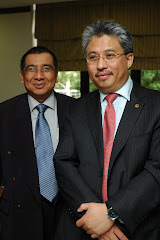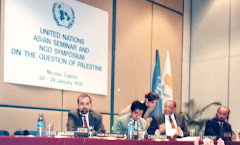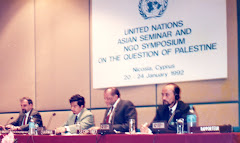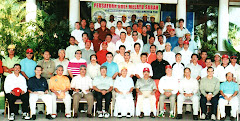Tahniah Melakans and George Townians.
World Heritage List
Melaka and
| Date of Inscription: 2008 |
Brief Description
Melaka and
The Criteria for Selection
To be included on the World Heritage List, sites must be of outstanding universal value and meet at least one out of ten selection criteria. These criteria are explained in the Operational Guidelines for the Implementation of the World Heritage Convention which, besides the text of the Convention, is the main working tool on World Heritage. The criteria are regularly revised by the Committee to reflect the evolution of the World Heritage concept itself.
Until the end of 2004, World Heritage sites were selected on the basis of six cultural and four natural criteria. With the adoption of the revised Operational Guidelines for the Implementation of the World Heritage Convention, only one set of ten criteria exists.
|
| Cultural criteria | Natural criteria | ||||||||
| Operational Guidelines 2002 | (i) | (ii) | (iii) | (iv) | (v) | (vi) | (i) | (ii) | (iii) | (iv) |
| Operational Guidelines 2005 | (i) | (ii) | (iii) | (iv) | (v) | (vi) | (viii) | (ix) | (vii) | (x) |
Selection criteria:
- to represent a masterpiece of human creative genius;
- to exhibit an important interchange of human values, over a span of time or within a cultural area of the world, on developments in architecture or technology, monumental arts, town-planning or landscape design;
- to bear a unique or at least exceptional testimony to a cultural tradition or to a civilization which is living or which has disappeared;
- to be an outstanding example of a type of building, architectural or technological ensemble or landscape which illustrates (a) significant stage(s) in human history;
- to be an outstanding example of a traditional human settlement, land-use, or sea-use which is representative of a culture (or cultures), or human interaction with the environment especially when it has become vulnerable under the impact of irreversible change;
- to be directly or tangibly associated with events or living traditions, with ideas, or with beliefs, with artistic and literary works of outstanding universal significance. (The Committee considers that this criterion should preferably be used in conjunction with other criteria);
- to contain superlative natural phenomena or areas of exceptional natural beauty and aesthetic importance;
- to be outstanding examples representing major stages of earth's history, including the record of life, significant on-going geological processes in the development of landforms, or significant geomorphic or physiographic features;
- to be outstanding examples representing significant on-going ecological and biological processes in the evolution and development of terrestrial, fresh water, coastal and marine ecosystems and communities of plants and animals;
- to contain the most important and significant natural habitats for in-situ conservation of biological diversity, including those containing threatened species of outstanding universal value from the point of view of science or conservation.
The protection, management, authenticity and integrity of properties are also important considerations.
Since 1992 significant interactions between people and the natural environment have been recognized as cultural landscapes.
Asian sites win UNESCO world heritage status
QUEBEC CITY (AFP) — A Hindu temple in Cambodia, two historic Malaysian trading towns and an early agricultural site from Papua New Guinea were added to UNESCO's World Heritage List on Monday.
Honored were the 11th century Preah Vihear temple site, perched on a mountaintop on the Thai-Cambodia border; the cities of the Straits of Malacca, Melaka and George Town in Malaysia, and the Kuk Early Agricultural Site in Papua New Guinea, marking the country's first entry on the list.
Also earning UNESCO heritage recognition was a sweeping part of the coral reef and lagoon around in the French
The UNESCO committee has been meeting in this oldest of Canadian cities since Wednesday to consider adding to its coveted list of protected architectural and natural wonders.
A total of 45 new sites were vying for inclusion, with the most controversial the Preah Vihear temple on the Cambodia-Thai border.
Last week,
In 1962, the
The long-standing dispute appeared resolved last month, after
But the deal sparked a political controversy in
Ambassador Francesco Caruso, special advisor to the director general of UNESCO, told AFP the listing was not meant to prejudice the ongoing dispute.
Rather, it was hoped it might be amended in the future to a bi-national listing of the temple and its contested landscape.
"It could become a mixed natural and architectural site, the door is open. The Cambodians negotiated a listing that opens the door to such future harmony. The Thais are demanding it now," he said.
The ruins of the Hindu temple are the most important example of ancient Khmer architecture outside of
Built to honour the Hindu god Shiva, Preah Vihear stretches dramatically up to a cliff-top in the Dangrek mountain range.
UNESCO deemed the site exceptional for its location on a plateau with sheer cliffs overlooking a vast plain and mountain range; its rare architecture and the religious function of the temple; and its carved stone ornamentation.
To date, 862 sites in more than 140 countries have been designated UNESCO World Heritage sites.
The UN agency also named as a heritage site 15,000 square kilometers (5,800 square miles) of the
"We are delighted," said Isabelle Ohlen, vice president of the New Caledonia Congress.
Also on Monday, the heritage committee included examples of the 17th century military architecture of Sebastien Le Prestre de Vauban, who built or upgraded more than 300 fortifications along
Other sites added to the UNESCO list include Slovakian wooden churches, German early 20th century low-income housing, the Renaissance towns of
Its historic center, with its fortification towers, walls, gates and bastions, dates back to the foundation of the republic as a city-state in the 13th century.














































